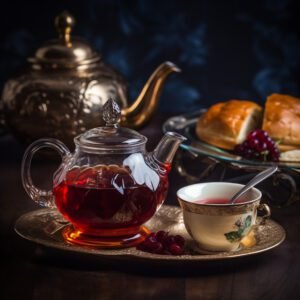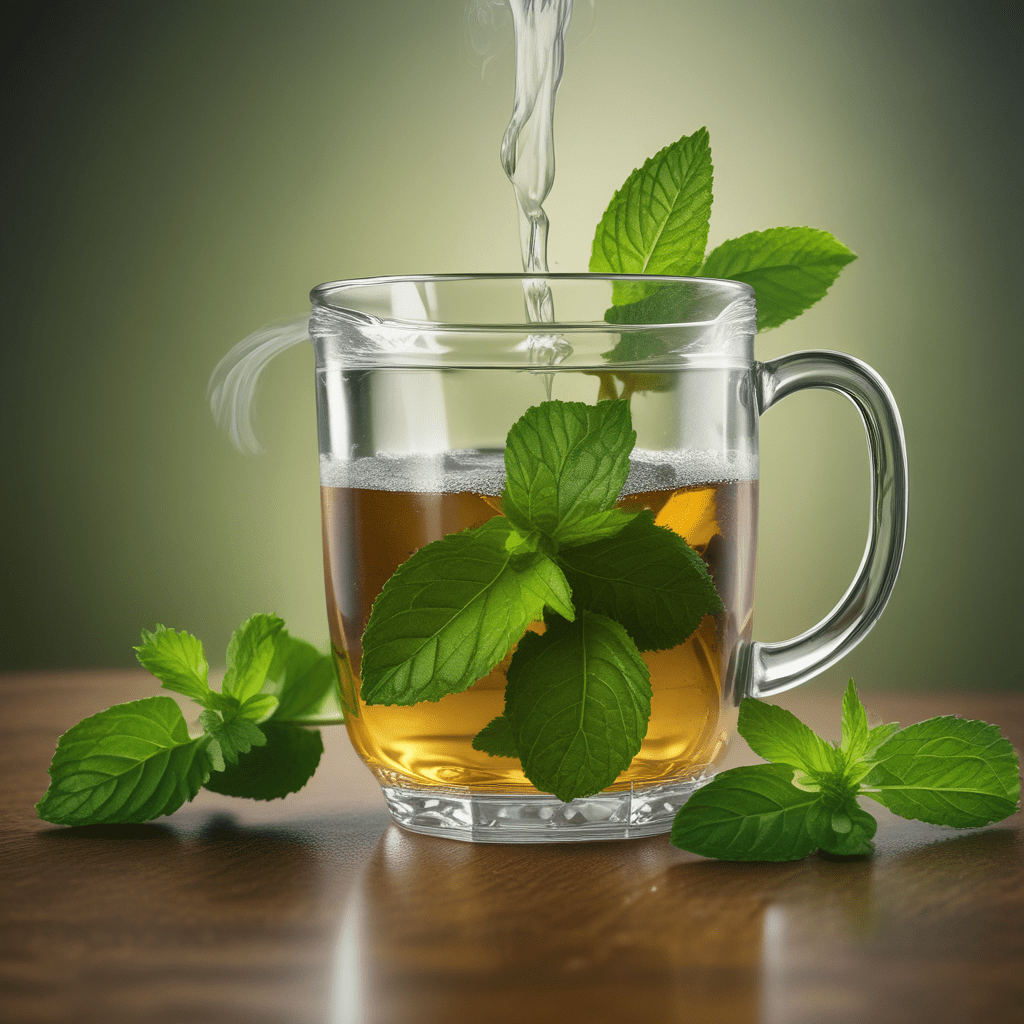
1. Introduction: A Journey into India's Tea Culture
Tea, an integral part of India's cultural fabric, boasts a rich history spanning over two millennia. From its humble origins in the northeastern state of Assam to its widespread cultivation across the country, tea has woven itself into the tapestry of Indian life.
However, in recent times, the vibrancy of India's tea culture has waned, overshadowed by the emergence of other beverages. This has led to a decline in tea consumption, particularly among the younger generation.
Recognizing the need to revitalize this treasured tradition, this article delves into the art of tea appreciation, aiming to rekindle the nation's love affair with this exquisite beverage.
2. Understanding Tea Appreciation: A Multifaceted Experience
Appreciating tea transcends merely consuming a beverage; it encompasses a multi-sensory experience that engages the mind, body, and spirit. This appreciation stems from understanding the intricate nuances of tea types, origins, and brewing methods.
From the delicate aroma of Darjeeling to the robust flavor of Assam, each tea variety possesses a unique character. Familiarizing oneself with these distinctions allows for a deeper appreciation of the diverse world of Indian teas.
Additionally, comprehending the impact of factors such as water quality, brewing temperature, and steeping time on the final cup reveals the artistry involved in crafting the perfect tea.
3. Cultivating a Sensory Experience: A Dance of the Senses
Tea appreciation extends beyond the sense of taste; it is a symphony of sensory experiences. The captivating aroma, the vibrant color, the delicate texture, and the lingering aftertaste all contribute to a holistic tea experience.
Mindfully engaging with each sense enhances appreciation. Inhaling the fragrant steam, observing the swirling hues of the infusion, savoring the subtle nuances of flavor on the palate, and feeling the smooth texture against the tongue – these mindful practices elevate tea consumption into an art form.
4. Exploring the Diverse World of Indian Teas: A Journey of Flavors
India, a land of diverse landscapes and climates, is home to a wide array of tea-growing regions, each producing teas with distinct characteristics. Darjeeling, known for its delicate muscatel flavor, Assam, famed for its robust malty notes, Nilgiris, renowned for its refreshing citrusy aroma, and Kangra, celebrated for its floral fragrance – these are just a few examples of India's tea tapestry.
Exploring these diverse tea varieties unveils a world of unique flavor profiles and experiences, each waiting to be discovered.
5. The Art of Tea Brewing: Unlocking the Essence of Tea
Brewing tea is an art form that transforms dry leaves into a flavorful infusion. Each tea type demands specific brewing parameters to unlock its full potential. Water temperature, steeping time, and tea-to-water ratio play crucial roles in determining the final cup's character.
For instance, delicate Darjeeling teas require lower water temperatures and shorter steeping times, while robust Assam teas thrive in hotter water and longer infusions. Mastering these brewing techniques empowers individuals to craft perfect cups tailored to their preferences, maximizing their tea enjoyment.
6. The Perfect Tea Setting: Cultivating a Serene Ambiance
The setting in which tea is enjoyed plays a significant role in enhancing the experience. Creating a tranquil and inviting ambiance can transform a simple tea break into a rejuvenating ritual.
Choosing a serene space, free from distractions, sets the stage for mindful tea consumption. Soft, natural lighting or the warm glow of candlelight can create a cozy and inviting atmosphere. Gentle music, preferably instrumental or nature sounds, can further enhance the sense of tranquility.
The choice of teaware also contributes to the overall experience. Elegant teacups and saucers, a delicate teapot, and a beautifully crafted tray can elevate the act of tea preparation and consumption into an aesthetic ritual.
7. Beyond the Cup: Tea Rituals and Traditions – A Celebration of Culture
Tea is deeply intertwined with Indian culture, giving rise to rich traditions and rituals that have been passed down through generations. These rituals go beyond simply brewing and consuming tea; they hold social and cultural significance, fostering a sense of community and connection.
In many parts of India, chai, a spiced milk tea, is an integral part of daily life, bringing people together for conversations and shared experiences. Tea stalls serve as vibrant social hubs, where individuals from all walks of life gather to bond over a cup of chai.
Beyond daily consumption, tea also plays a significant role in festivals and celebrations. Weddings, religious ceremonies, and social gatherings often feature elaborate tea ceremonies, with specific rituals and customs unique to each region. These rituals not only celebrate the cultural significance of tea but also strengthen social bonds and preserve traditions.
8. Promoting Tea Education and Awareness: Nurturing a New Generation of Tea Lovers
To revitalize India's tea culture, promoting tea education and awareness among the younger generation is crucial. This can be achieved through various initiatives, including incorporating tea appreciation into school curriculums, organizing tea workshops and tasting sessions, and utilizing social media platforms to share knowledge and spread awareness.
By educating the younger generation about the history, cultural significance, and diverse varieties of Indian teas, a renewed appreciation for this treasured beverage can be cultivated. This will not only ensure the continuation of India's rich tea heritage but also foster a new generation of tea enthusiasts.
9. The Future of Indian Tea Culture: A Story of Innovation and Growth
The future of Indian tea culture is bright, with immense potential for innovation and growth. With changing consumer preferences and an increasing demand for premium teas, there is a growing focus on specialty teas, organic production, and sustainable practices.
Moreover, the rise of tea tourism offers exciting opportunities for visitors to experience tea plantations firsthand, learn about the tea-making process, and immerse themselves in the rich tea culture of India. Additionally, advancements in technology are paving the way for new tea brewing methods and innovative tea-based products, catering to the evolving needs of consumers.
By embracing these trends and fostering a culture of innovation, Indian tea culture can reclaim its rightful place as a cherished tradition and a thriving industry.
10. Frequently Asked Questions: Unraveling the Mysteries of Tea
What is the best way to store tea?
Tea should be stored in an airtight container, away from direct sunlight, heat, and moisture. Ideal storage temperatures range from 60°F to 70°F.
How long does tea last?
The shelf life of tea varies depending on the type and storage conditions. Generally, black tea can last up to two years, green tea up to one year, and oolong tea up to six months.
What is the difference between black tea, green tea, and oolong tea?
The difference between these tea types lies in their oxidation levels. Black tea is fully oxidized, green tea is unoxidized, and oolong tea falls somewhere in between. This results in variations in flavor, color, and caffeine content.
How do I choose the right tea for me?
Consider your personal preferences for flavor, aroma, and caffeine content. Experiment with different types of tea to discover your favorites.
What are some tips for brewing the perfect cup of tea?
Use fresh, filtered water and the correct water temperature for the specific tea type. Measure the tea leaves accurately and adjust the steeping time as needed.


